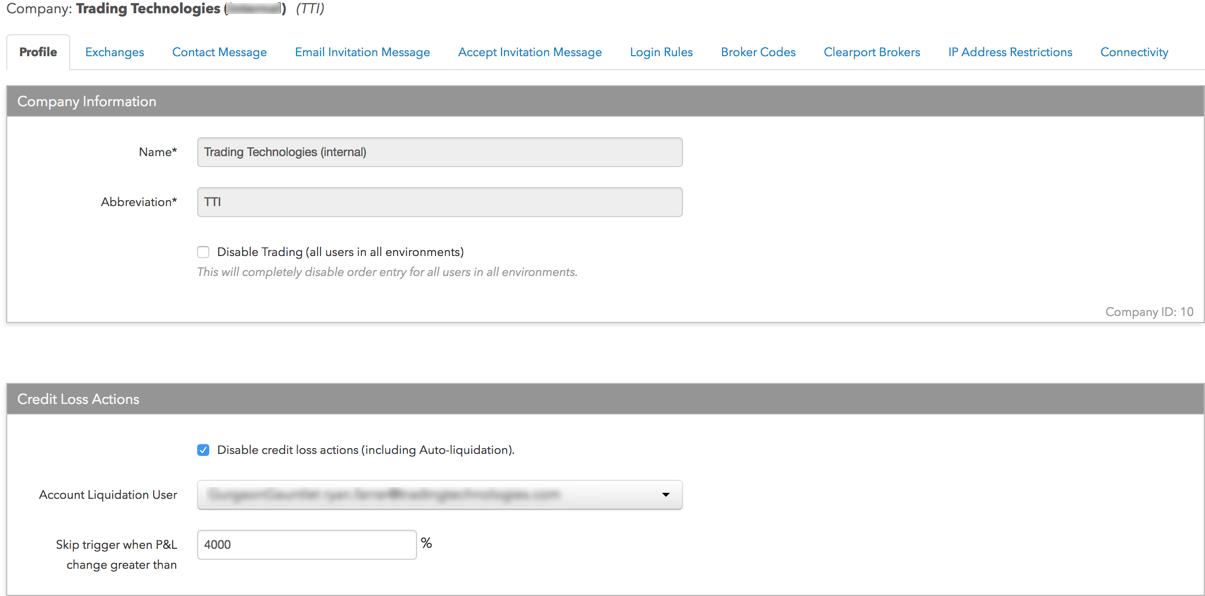Risk Limits
Setting account auto-liquidation
On the Company | Settings | Profile tab, you have the option to enable post trade risk management for your company. When this functionality is enabled at the company level, you have the ability to enable post trade risk actions for all accounts in your company on a per account basis.
To enable post trade risk management for your company, enable the Disable credit loss actions (including Auto-liquidation) setting. If you also want to enable account auto-liquidation as one of the post trade risk management options, you also need to assign an account liquidation user.
Note: For the auto-liquidation functionality to work, ensure that the auto-liquidation user that you assign on the Profile tab is an "active" user and configured with the proper exchange credentials (e.g., Tag 50) required by the applicable exchanges. Any closing orders will be placed to the exchange on behalf of this user. Exchange properties are set for a user on the User | Exchanges tab. If an account auto-liquidation user is not assigned or if the needed User | Exchanges settings are not configured correctly, liquidation will not be started.

When assigning an auto-liquidation user to your company, consider the following:
- Only one user per company needs to be assigned in order to use the auto-liquidation functionality for an account.
- User risk limits (e.g., trading mode, max orders per second, etc.) are not applicable to the liquidation user.
- Ensure that the necessary user exchange credentials are assigned to the liquidation user. These credentials are required for routing orders in order to liquidate an account.
- The liquidation user is not required to have an account. Ensure that the account with auto-liquidation enabled has the necessary account and connection credentials assigned in order to route liquidation orders to the applicable markets.
To set auto-liquidation for your company:
Note: Perform this procedure before setting a credit limit and enabling the auto-liquidate credit loss action on accounts in your company.
- Click Company Settings | Settings in the left navigation pane.
- Click the Profile tab.
- Uncheck the Disable credit loss actions (including Auto-liquidation) checkbox.
- Click the Account Liquidation User field and select a user.
Note: Assign an "account liquidation user" before enabling auto-liquidate on accounts in your company. Auto-liquidation cannot be enabled per account until one liquidation user is assigned in your company.
- To prevent auto-liquidation if the existing P/L and the next P/L update for the account has a difference of a certain percentage, enter a value in the Skip trigger when P/L change greater than field.
For example, if you enter a value of "4000" and have account auto-liquidation enabled, then the account will not be liquidated if the difference between your current P/L and the next P/L update is 4000%. - Click Save Changes.
Post trade risk management is now enabled (active) for your company and can be applied to accounts in your company with credit loss settings assigned.
To disable auto-liquidation for your company:
- Click Company Settings | Settings in the left navigation pane.
- Click the Profile tab.
- Check the Disable credit loss actions (including Auto-liquidation) checkbox.
- Click Save Changes.
Post trade risk management is now disabled (inactive) for your company.